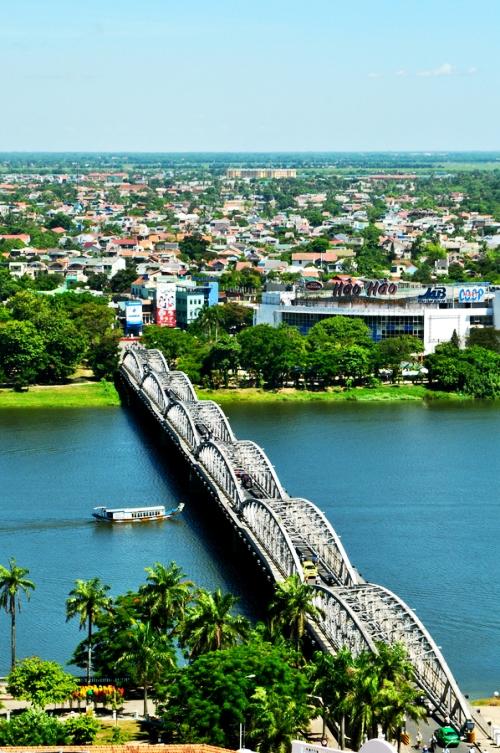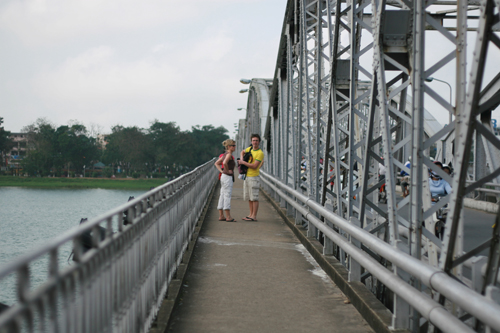Welcome To Vietnam News
Popular Posts This Week
Popular Posts This Month
Home » Travel
Hue’s ancient bridge of Truong Tien
Tuesday, March 11, 2014
Over 100 years have passed, the graceful bridge still reflects on the Perfume River to witness all the ups and downs of history and countless 'scars of time’ and becomes a romantic symbol of the ancient capital.
In 1897, the French Resident Superior in Central Vietnam - Levecque – assigned Eiffel of France (known for the Eiffel Tower in Paris) to design and build the Truong Tien Bridge. The construction completed in 1899. To date, the bridge has connected the banks of the Perfume River for 114 years and it is even older than the historic bridge of Long Bien in Hanoi (1899-1902).
Truong Tien Bridge has many names: Thanh Thai (name of the Thanh Thai King of the Nguyen Dynasty), Clemenceau (a French Prime Minister during the First World War), Nguyen Hoang (The Nguyen lord who explored the central region between the 16th and early 17th century) and Truong Tien or Trang Tien because the bridge was located near a coin casting enterprise of the Nguyen Dynasty.
For more than 100 years of history, the graceful Truong Tien Bridge has undergone many changes and ups and downs along with the ancient capital.
  |
In 1904, the historic storm damaged the bridge. In 1906, the bridge was repaired, and the bridge surface was changed from wood to reinforced concrete.
In 1937, during the reign of Emperor Bao Dai, the bridge was extended for bicycles and pedestrians. In 1946, part of the bridge was collapsed due to mines in the Vietnam - France War. In 1953, it was repaired. In 1968, Truong Tien Bridge again collapsed into the Huong River. Until 1991, Truong Tien Bridge was renovated again, lasted for 5 years (1991-1995). In 2002, a modern lighting system was installed on the bridge.
The bridge has becomes part of the history of Hue City. Although there are many other bridges across the Perfume River, such as Bach Ho, Phu Xuan or Bai Dau, Truong Tien is still the most typical and a symbol of the romantic city of Hue.
Pha Le





Comments[ 0 ]
Post a Comment